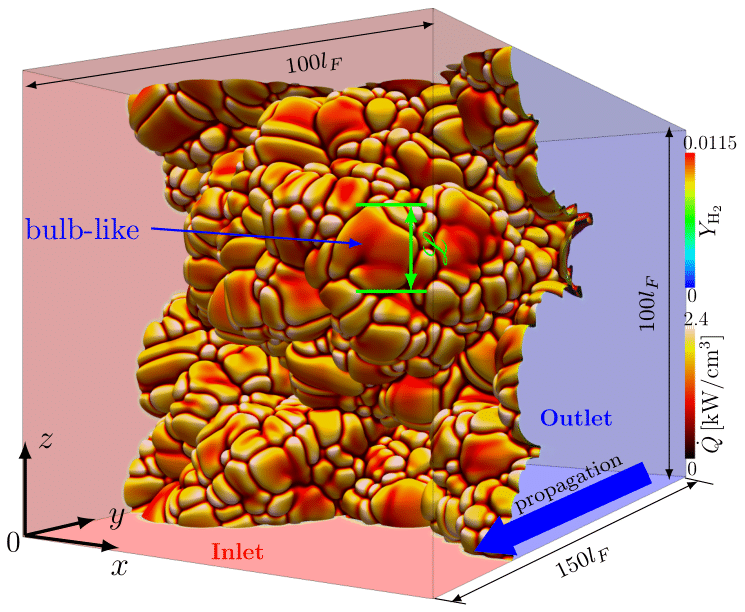Supervisor of Doctorate Candidates
Supervisor of Master's Candidates
E-Mail:
Education Level:With Certificate of Graduation for Doctorate Study
Contact Information:(+86)15655198073
Degree:Dr
Alma Mater:Zhejiang University
Honors and Titles
2022-10-01 Outstanding Youth Science Fund Project (Overseas)
2022-02-01 CTR Summer Program Fellowship, Stanford University
2021-03-01 Marie Sklodowska-Curie Individual Fellowship
2020-08-01 Bernard Lewis Fellowship
2018-12-01 Alexander von Humboldt Research Fellowship for Postdoctoral Researchers
2018-06-30 Excellent graduate of Zhejiang Province.
The Last Update Time: ..
Hits:

Journal:Combustion and Flame
Key Words:Hydrogen, Thermodiffusive instability, 3D DNS, Characteristic patterns
Abstract:Thermodiffusive instabilities can have a leading order effect on flame propagation for lean premixed hydrogen flames. Many simulation studies have been performed to study this effect, but almost exclusively in two-dimensional (2D) or domain sizes too small to support the characteristic large-scale features of the instability. The main purpose of this study is to quantify the differences of 3D and 2D flames using simulations on sufficiently large domains. To this end, direct numerical simulations (DNS) of thermodiffusively unstable laminar premixed hydrogen flames stabilized in 3D domains were performed. The effects of confinement on the flame dynamics are rigorously investigated by varying the domain size. The flame burning velocity shows a strong dependence on the domain size when the lateral domain width is less than 50 laminar flame thicknesses. The characteristic patterns of the thermodiffusively unstable flame are analyzed in detail, including the instantaneous flame structure, global burning velocity, flame surface area, stretch factor, curvature distribution, and the cell size. The effects of the computational setup (2D vs. 3D) on the local flame front curvature and the distributions of the thermo-chemical quantities are quantified through a conditional analysis. The formation and destruction mechanisms of the distinct cellular structures observed in the 3D domain are analyzed focusing on the interactions between the flame dynamics and the flow field, and the contributions of the production of flame surface density, kinematic restoration, and curvature dissipation are quantified. Compared with the corresponding 2D simulation, the flame surface area in the cut plane of the 3D configuration is similar, yet the burning velocity and the stretch factor are increased. The reason for this is the difference in curvature statistics in 2D and 3D. In 3D, larger extreme curvature values are obtained, leading to quantitatively different distributions of the thermo-chemical variables. For example, the peak H radical concentration in the 3D simulation is about twice higher than in the 2D simulation.
First Author:Xu Wen, Lukas Berger, Liming Cai, Alessandro Parente, Heinz Pitsch
Indexed by:Journal paper
Issue:265
Page Number:113278
Translation or Not:no
Date of Publication:2024-04-28
Included Journals:SCI
Links to published journals:https://www.sciencedirect.com/science/article/pii/S0010218023006521?via%3Dihub